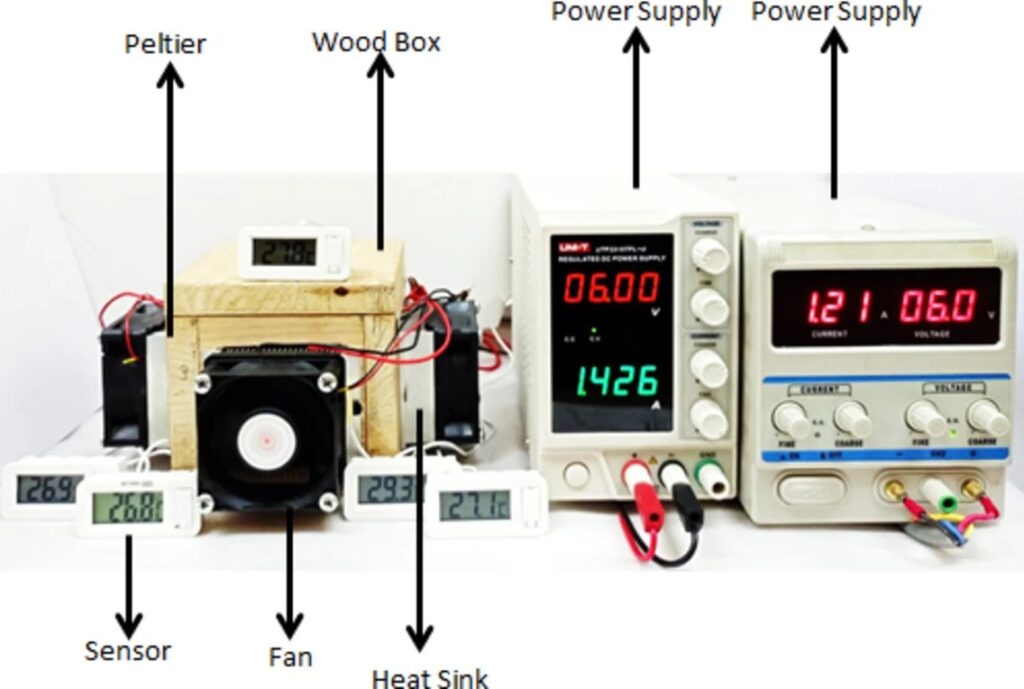Egyptian researchers have developed a mini refrigerator powered by one to four thermoelectric units with different voltages. They simulated and tested the system under different conditions, achieving a maximum coefficient of performance (COP) of 77.3%.
Egyptian researchers have built and analyzed a solar-powered mini refrigerator using thermoelectric units (TUs) for cooling. The thermoelectric coolers (TECs) in this study utilize the Peltier effect, in which electric current flows in series through p-type and n-type semiconductors, cooling one side of the device and heating the other. .
“The primary objective of this research is to study the efficiency of a thermoelectric refrigerator under different operating conditions,” the academics said. “The aim is to meet the daily needs of residents of remote areas by using renewable energy sources without the need to store energy. Different configurations of Peltier elements, along with different voltages generated by the photovoltaic cells, will be tested to control the target temperatures.”
The experimental refrigerator box (RB) consisted of a wooden outer box and a stainless steel inner box, separated by thermal insulation foam. The standard system included four TU, each including a Peltier unit made of n-p junction semiconductors soldered to a copper, aluminum finned heat sink and a fan. The fan cools the warm side of the TU and ensures optimal operation. The RB measured 8 cm x 8 cm x 8 cm and had a volume of 512 cm3.
The researchers used a power supply to simulate different PV capacities and irradiation levels, applying voltages from 4 V to 14 V to operate one to four thermoelectric units. They placed 0.25 liters of water in the container and measured the starting and ending temperatures every five minutes during a 45-minute experiment.
“The best cooling is achieved by using four Peltier units, 10 V, an initial temperature of 30.9 C and a final temperature of 26.4 C,” the scientists said. “The lowest coefficient of performance (COP) is 11.2%, while the highest COP is 77.3%, obtained using one Peltier at 4 V.”
The researchers recreated the experimental model in a MATLAB Simulink simulation, optimizing the COP with one Peltier unit at 4 V and achieving a COP of 71.089%, showing strong agreement with their results. Using the MATLAB simulation, they also calculated that for an eight-hour operation in Giza, Egypt, the required irradiation levels were 149.5 W/m² in summer, 67.5 W/m² in winter, 119.3 W/m² m² in spring and 118.3 W. /m² in autumn. Target temperatures were set at 20°C in summer and spring and 15°C in winter and autumn.
They presented their results in “Optimization COP by RSM and MATLAB model of mini refrigerator based on thermoelectric units powered by solar photovoltaics”, which was recently published in Scientific reports. The research was conducted by scientists from the Egyptian National Research Center and Helwan University.
This content is copyrighted and may not be reused. If you would like to collaborate with us and reuse some of our content, please contact: editors@pv-magazine.com.

